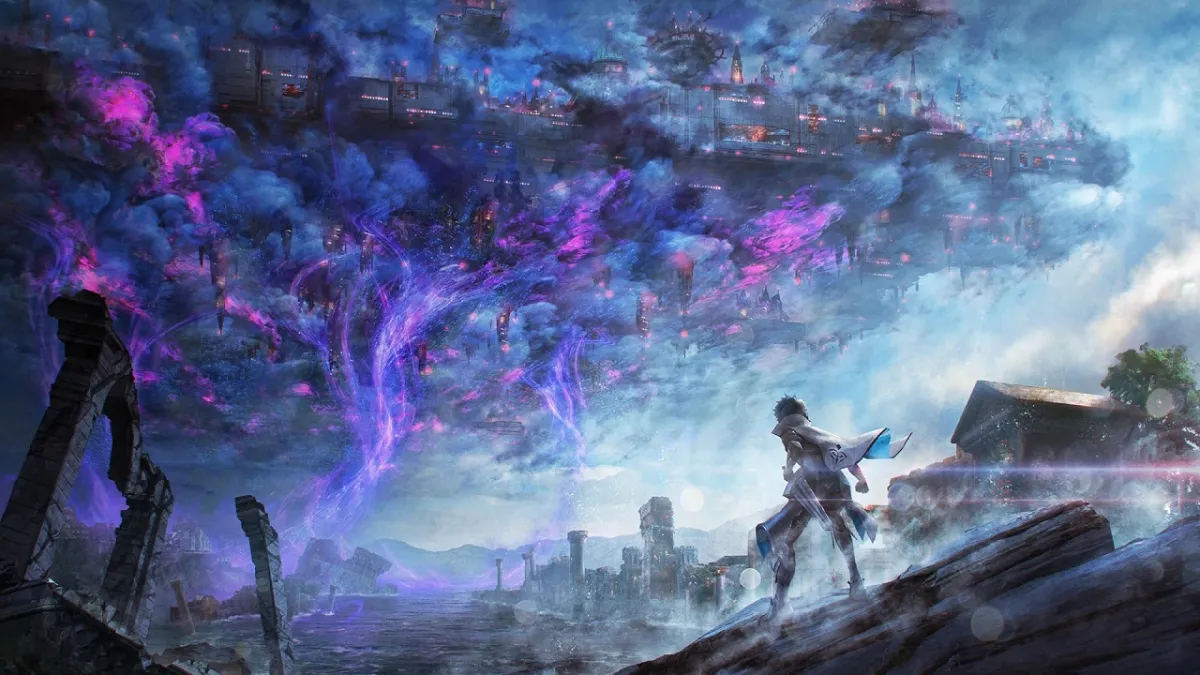It all started in 2004: Type-Moon, after being primarily a doujin soft organization, released its first commercial title — an eroge visual novel on the PC known as Fate/stay night. Between its theme, plot and Kinoko Nasu’s unique brand of storytelling, it became an instant hit, eventually spawning a massive multimedia franchise, featuring everything from an animated series to light novels.
Of course, it also has quite a few games under its belt, and the latest among them is Fate/Extella Link — the follow-up to 2017’s Fate/Extella: The Umbral Star.
To be honest with you, I’m not the biggest follower of the Fate series. I’ve played stay night and Extra, as well as watched the original anime and its prequel, Fate/Zero, but that’s about as much of the series I genuinely know firsthand. Beyond those, it’s almost entirely synopses where my knowledge stems from.

And the reason why I mention this is because the series is incredibly esoteric and lore heavy, requiring you to have knowledge of some basic terminology and events in order for you to appreciate what’s going on.
Though not to the same extent, Fate/Extella Link adheres to this paradigm, so much of what happens during the course of the story will probably go over your head if you have even less experience with the series than I do. To the game’s credit, though, there is a glossary that tells you much of what one needs to know in order to grasp the ongoing situation. There’s no obligation to do this, mind you, but that would just leave you with a flashy musou with characters and a plot that you have no real reason to care about.
Fortunately, Nasu went easy on us this time, so even a newcomer will likely be able to follow it.
Taking place after the events of Fate/Extella: The Umbral Star, the protagonist, Hakuno Kishinami, is living peacefully within a virtual world known as SE.RA.PH. By their side are the key Servants from the previous game — Nero Claudius, Tamamo no Mae and Altera Larva — who have since made peace with one another. As expected, however, things quickly go south soon afterward. Altera suddenly gets kidnapped and the remainder of the group is rescued by a “new” Servant named Charlemagne after they’re attacked by a group of rogue Attack Programs. Now, using their newfound ally’s Noble Phantasm as a base camp, the four set off to discover why their world is in such disarray, as well as rescue Altera from her mysterious captor.
Did you get all that? If so, then you’ll have no problem following everything else. As for everyone else? Well, get to reading the glossary.
Like I said before, though, you don’t have to do this (though I really would recommend it). And if elect not to, you’ll be pleased to know that the gameplay in Fate/Extella Link is enjoyable even without the background knowledge. I came into this expecting a mediocre title that sought to simply profit off the franchise, and I was wrong — it’s solid.

Unlike a certain other game also by Marvelous, Fate/Extella Link is actually a musou, meaning the gameplay revolves around you fighting thousands of enemies during missions that require you to complete various objectives such as protecting certain allies or capturing specific bases in order to progress.
It’s a tired routine at this point, but it’s fortunately elevated thanks to a flair and pizzazz that only a combination of Type-Moon and Marvelous would be able to concoct. You might take a Caster class character like Tamamo no Mae and have her unleash a furious array of spells in an area that has clear references to futuristic technology, or have a Rider class character like Astolfo summon a Hippogriff in a level that evokes imagery reminiscent of a traditional Japanese temple only for everything to change into a disco ballroom. It’s this absurd intersection between history, technology and magic that will likely draw the uninitiated into the game’s world and allow them to use an iteration of a Roman emperor to summon a bed of roses in a bid to dismantle a space cannon without batting an eye. It’s pretty awesome.
Beyond that, even just regular gameplay is highly enjoyable. Combat is smooth, responsive and quite fast. And while there are the standard strings of light and heavy attacks that is common among titles of Fate/Extella Link’s ilk, the focus wasn’t for them to be lengthy and elaborate, but to be quick and effective for the sake of maintaining your character’s momentum. It’s for this reason that the 1000+ kills in a Warriors game looks like light work here where an excess of 3000 is the norm.
That said, Fate/Extella Link isn’t all surface — there’s plenty going on underneath the hood.
Most notable is the presence of “Active Skills” that each character is free to unleash after a brief cooldown period. At first, your immediate instinct might be to simply unleash them whenever they’re available, but clever usage will make them far more effective. You see, certain skills have special icons next to them depending on the character’s class (Saber, Rider, Lancer, etc.) and that means they can be used to trigger what is known as a “Rush” on stronger opponents when the right conditions are met. Simply hit the opponent a few times with a regular attack string and follow that up with the appropriate skill to cause your character — as well as any nearby allies — to pummel the target after sending it soaring into the air.
Meanwhile, there’s also Kishinami him/herself, who becomes something of a gameplay element during missions. As a “regular” human, they can’t fight anywhere as well as their Servants, but since they do have the status of “Master,” they can make use of Command Seals to help everyone out. They have three Seals both in stock and total, with the first two — teleportation and resurrection — using one seal, while the third — full recovery — uses all three. Of course, enemy forces aren’t just going to let you have such an advantage, so expect them to target Kishinami directly at multiple points throughout a mission.
Of course, if finesse isn’t your thing, then brute force is a viable option. Defeating enemies will steadily fill up a blue meter that allows you to activate “Moon Drive” when full, granting a boost to their offensive and defensive abilities, as well as access to an aoe attack called “Drive Skill.” And whilst active, defeating enemies will increase a yellow gauge, which allows the use of a character’s ultimate attack, Noble Phantasm. These are as deadly as they are visual marvels, treating players to a cool scene before everything in the immediate area gets utterly annihilated. Were you attacking a base? It’s yours now. Did a special enemy get hit? It’s probably almost dead unless it was a particularly strong one.
Interestingly, despite the flair and mechanics present in combat, what I perhaps appreciated most was the attention and detail given to each character.

With a total of 26 (16 returning and 10 new) characters from Fate/stay night, Fate/Zero, Fate/Apocrypha, Fate/Extra and even the Fate/Grand Order mobile game, there were plenty of chances for the developers to ruin the uniqueness of a cast member — which, fortunately, they didn’t. As such, even if you don’t know a thing about them in terms of lore, there’s little chance you won’t find something to like about them in terms of gameplay. There’s a magic-wielding fox girl, a guy who can summon a myriad of weapons and even a pirate captain who can mow down enemies using a small ship, and that’s just scratching the surface.
As for me, I was expecting to use mostly Astolfo and Tamamo no Mae throughout my review run , but I picked up Elizabeth Bathory on a whim and fell in love almost instantly. Historically, she’s a noblewoman and serial killer from 16th Century Hungary. In the series’ lore, however, she was summoned before she did all that, so all we’re left with is a small, lance-wielding girl who fancies herself an idol. Yes, that’s right — an idol. Though she does have attacks that makes use of her lance, many of her Active Skills has her use the microphone on the other end of her weapon in order to sing enemies to death. There also happens to be an amusing nod to her future self, where she traps victims in an iron maiden during one attack and uses the blood to recover her health. Clever.
Of course, this detail goes well beyond any individual character’s actions in combat, it’s present in their characterization outside of it too. While at the Base Camp, players can have Kishinami go to the Barracks and talk to the various Servants who’ve joined their cause, during which time parts of their lore or personality will inevitably shine through. Tamamo considers herself Kashinami’s wife and much of her dialogue with them will reflect that, while Nero will inevitably find a way to praise herself if given the opportunity. Granted, this will likely have more value to fans of the series, but I’m sure some newcomers might come across a character who they find amusing and become encouraged to check out the source material as a result.
And speaking of the Base Camp, it has an important role in Fate/Extella Link, so let’s get to that next.

As you might have figured, the Base Camp is where you’ll be when you’re not beating (or, in my case, singing) thousands of enemies into oblivion. Kishinami will walk around with a Servant of your choosing in tow. On occasion, a Servant might have a Side Mission for you to complete during your next mission, but the main purpose of the camp is to either go to the My Room, Strategy Room or the aforementioned Barracks.
My Room is where most of the customization for both Kishinami and the Servants take place. Beyond talking to a Servant or selecting the one you wish to be active, you can also change their Active Skills, equip the Install Skills dropped by various enemies during missions to grant the user various bonuses, change their costume or use QP (money) to increase their level. Meanwhile, Kishinami can create and equip Mystic Codes, which grant further bonuses to Servants and allows them to use various items in battle, as well as combine Install Skills via Synthesis.
The Strategy Room, on the other hand, is where you go for last minute preparations (a few options available in My Room are present here) and ironing out battle-related details before heading out to the field. Most notably, this is where you can choose which Side Missions you want to complete in order to raise a given Servant’s Bond Level. This is an important consideration to make too, because not only does increasing it unlock costumes for certain characters, but it also increases the amount of Install Skills they can equip, as well as the range of actions they can perform when set as a support unit.

Once you make your choices, head into battle and Fate/Extella Link’s gameplay cycle will begin: complete a battle, use the spoils to strengthen Kishinami and their Servants, then head into a more difficult battle for even better loot. Rinse and repeat.
Overall, there wasn’t anything I found particularly egregious during my time with Fate/Extella Link. There is plenty of content thanks to the story having multiple routes and the presence of bonus stages to provide extra challenges and flesh out other characters. On top of that, the game handled well on my PlayStation 4, with no noticeable frame drops or stutters to speak of. And, while I didn’t play Umbral Star, everything I’ve watched up to this point clearly indicates that this game looks far better.
I should mention the camera, though, it’s…uncooperative. It doesn’t lock on to anything if it isn’t directly in your FoV and the feature actually works against you in cramped areas. Amusingly, it feels like the times when it would theoretically work the best also happen to be the moments when it’s not actually needed.

The Verdict
I came into Fate/Extella Link expecting a mediocre title that sought to simply profit off the franchise, but what I found instead was a solid game with an interesting story. However, that’s where the greatest issue with this game lies — the relationship between the gameplay, story and lore.This title is a package deal, and while the gameplay is, again, solid, it loses much of its impact if the player doesn’t grasp the story and lore that contextualizes it.
So, in the end, I think what will determine your level of enjoyment here will be how familiar you are with the series. If you’re a fan of the franchise and like musous, then I see no reason why you won’t enjoy this. On the other hand, I recommend checking out Extella if you’re new. You can go in blind if you want, but I don’t think the gameplay alone is good enough to carry the whole package.











Published: Mar 19, 2019 01:59 am